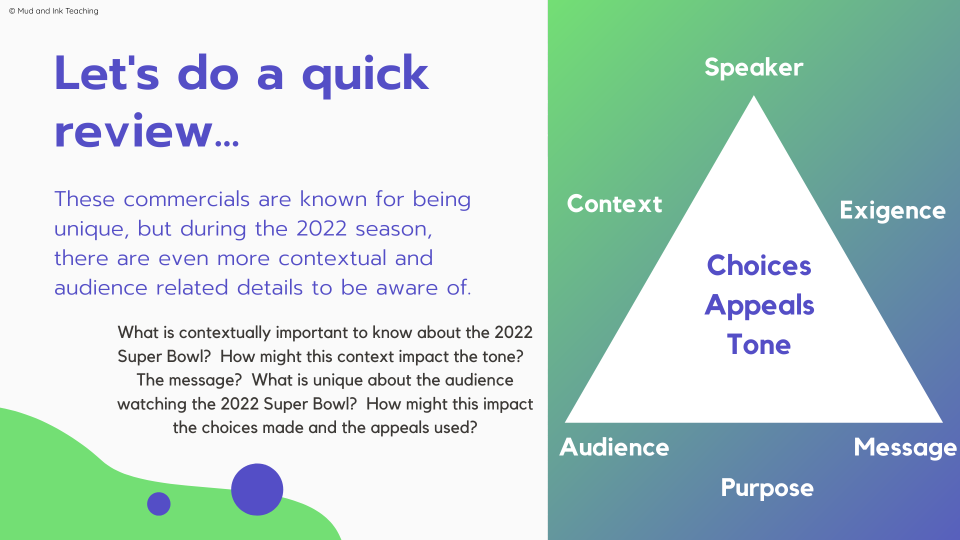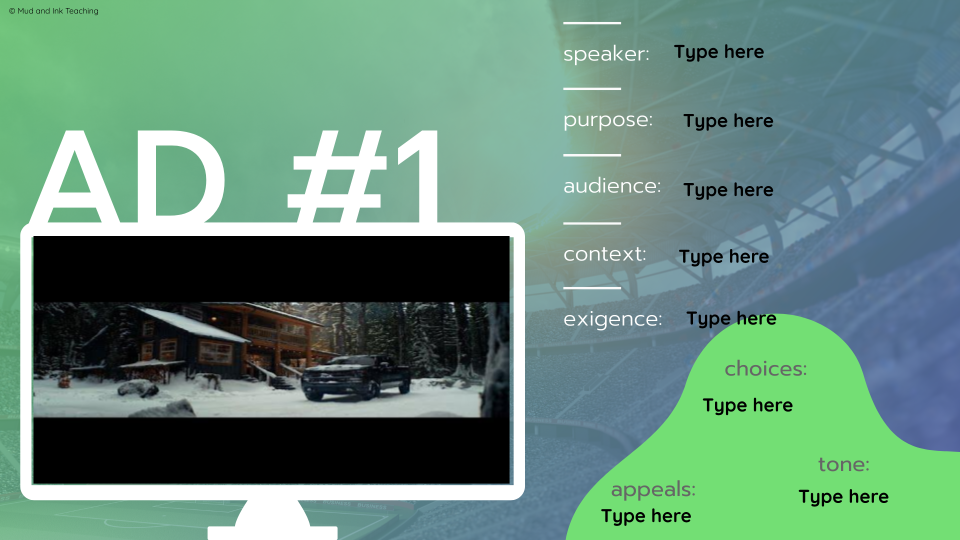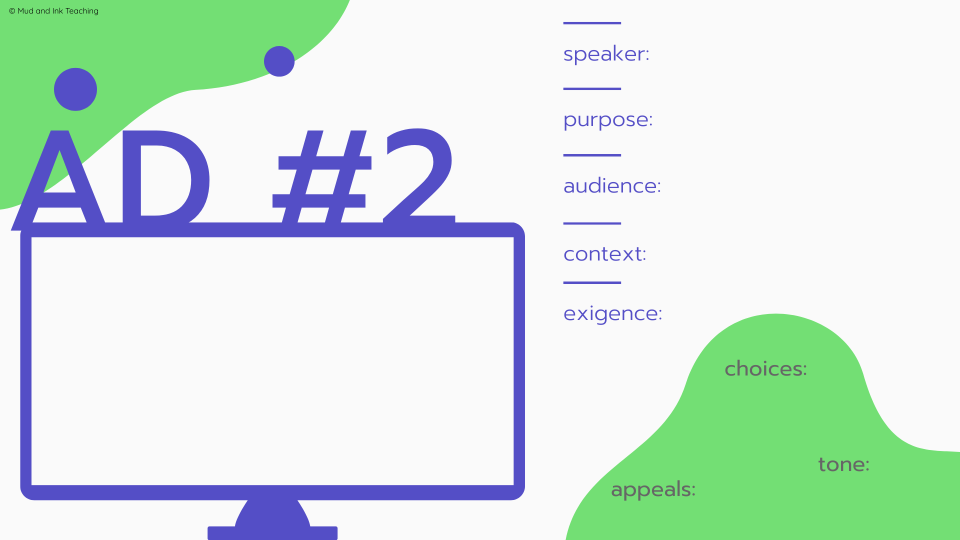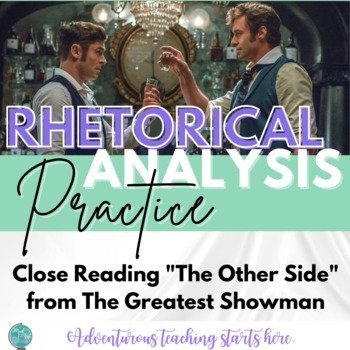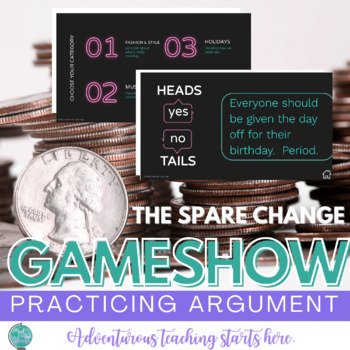3 Super Bowl Ads to Analyze for Rhetorical Analysis
Note to readers: This post was written prior to the 2022 Super Bowl in an effort to help teachers pre-plan their lessons and not have to wait until the Sunday night after the game. The ads suggested in this posted are based on the year 2022 and what was pre-released ahead of the game. There are dozens MORE commercials to use as powerful teaching tools, and you can access our public Wakelet for more ideas here! Happy reading!
Rhetorical analysis is a skill that needs to be practiced over and over and over again. Too often, we are introducing ethos, pathos, and logos on repeat without ever getting much further. We know rhetorical analysis is so much bigger than labeling a few appeals: it’s about understanding the power of the message in the context that it’s delivered.
START WITH THE RHETORICAL SITUATION
If you are new to the idea of the rhetorical situation, fear not! I have you covered. For a basic overview for yourself AND a lesson for your students, I highly recommend checking out the article I wrote that shares the lesson I do with my students on the song “Be Our Guest” from Beauty and the BeastI. Go check it out here:
When it comes to Super Bowl ads, the rhetorical situation is just as important as figuring out what rhetorical strategies are in play. Students need help identifying the speaker (is it the company or the actor?), recognizing the different purposes of advertising on this specific day (hint: it’s not always to sell!), and getting a stronger grasp on the intended audience (students think they are the audience just because they are watching the ad. Think again, kids!). Students may have never considered the value (yes, I mean $$) of building brand loyalty or the cultural relevance of patriotic imagery.
Super Bowl ads taught in a group give us the instructional power to discuss context in a powerful way: these ads are so highly reflective of the climate of the country at the time, and this provides a powerful place to discuss the themes and trends that students are seeing in the ads. For example, Stacy Jones from Hollywood Branded predicts, “Some of the overarching themes to Super Bowl ads this year are going to be adventure, growth and pushing yourself to expand past your boundaries. We’ve been in a lockdown for two years, with people busting at the seams to get out and experience life and live. Brands and the people behind them feel the same—and they’re ready to help fuel the adventure.” These are prime conversations to have with students — and ones that will be highly engaging for them.
HYUNDAI: JASON BATEMAN ACROSS HISTORY
Up first is a car commercial: The Hyundai Ion 5, an electric car that promises to be a necessary advancement in the evolution of driving. Here are a few places that are worth spending time in your lesson and analysis practice:
SPEAKER: If we say that the speaker here is Jason Bateman, then we have an interesting conversation ahead. What is he known for? What types of shows and films is he in? Why would Hyundai choose him as their spokesperson? What credibility might he add to their brand?
AUDIENCE: Now that we know more about the speaker, what does that tell us about the intended audience? What kind of an audience would connect with Bateman? What kind of audience might be interested in this product? Think about: age, gender, social/economic status. Are those people likely to be watching the Super Bowl?
TECHNIQUE: ANAPHORA: The commercial uses a repeated phrase (anaphora) for each example of ways that we have evolved in our technology across history. This is a great opportunity to talk about the effectiveness of its use and how that connects to the overall purpose of the ad.
AT&T: ZAC EFRON FISHING
SPEAKER: If we say that the speaker here is Zac Efron (both speakers, actually), how does that affect our analysis? What is he known for? What types of shows and films is he in? Why would AT&T choose him as their spokesperson? What credibility might he add to their brand? Why might they have him dressed this way and out in nature?
AUDIENCE: Now that we know more about the speaker, what does that tell us about the intended audience? What kind of an audience would connect with Efron? What kind of audience might be interested in this product? Think about: age, gender, social/economic status. Are those people likely to be watching the Super Bowl?
TECHNIQUE: HYPERBOLE: The hyperbole of this commercial is used in layers. Each hyperbole is visually stacked on top of another. How do these hyperboles contribute to the tone of the message? What do they reflect about the service provided? How might these hyperboles be read by the intended audience and how might that impact the success of the message?
CHEVY SILVERADO: WILDERNESS CAT
SPEAKER: This commercial does not use a well-known celebrity, and instead, a relatively unknown male actor. What do we know about this speaker’s demographics? How do these overlap with the intended audience? Why might that have been an important consideration for Chevy when casting this ad?
AUDIENCE: Based on what we know about Chevy and pickup trucks (and even the setting of the commercial) what kinds of people tend to be targeted by this brand? Are these people watching the Super Bowl? Is the 6+ million dollar investment likely to reach the intended audience?
TECHNIQUE: INCONGRUITY: Incongruity is a satirical technique that this commercial employs when the opposite of what’s expected is present (this can also be discussed as irony). Seeing a gruff man in the wilderness with a pickup truck, the audience expects him to have a dog by his side. Instead, it’s a cat. What is the effect of this incongruity? What kind of tone does it help create? How does this come back to the product itself and the intended audience?
I hope this gives you a good start in preparing a lesson to watch, talk about, and analyze some Super Bowl commercials this year. As always, I’d love to hear about your experiences, ideas, and outcomes in the comments below! Which ads did you use? Which ads did your students best respond to? Happy analyzing!


